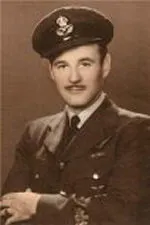Campbell, Frederick William
Killed in Action 1944-12-23


Birth Date: 1915-January-01
Born: Highland, Colchester, Nova Scotia
William True Campbell & Bertha Lillian Tomlinson
Home: Pembroke, Hants County, Nova Scotia (parents)
Enlistment:
Enlistment Date: Unknown
Service
RCAF
Unit
582 (PFF) Sqn- Squadron (RAF)
Pre Volamus Designantes We fly before marking
Base
RAF Little Staughton
Rank
Pilot Officer
Position
Pilot Officer
Service Numbers
J/94493
Prev: R/65080
Target
 Cologne Germany
Cologne Germany
First Burial
 Village Cemetery At Opitter
Village Cemetery At Opitter
Took off at from Little Staughton at 10:29 for an operation to Köln, Germany.
Out-bound crashed at Opitter (Limburg), 4 km SE of Bree Belgium.
Killed:Flight Sergeant Vivian George Hobbs RAF KIA parachute failed to open properly.F/Lt Peter Alfred Thomas DFC RAF KIA when the aircraft crashed.Warrant Officer Class 2 Fredrick William Campbell RCAF R/65080 KIA when aircraft crashed.
POWs:Flying Officer William Ewart Vaughan RCAF J/24199 POW camp not listed.F/Lt Ayton Richardson Whitaker RAF POW camp not listed.WO Herbert Fuller RAF POW camp not listed.
Hospitalized:Sergeant G Fallon RAF Injured and hospitalized.
Lancaster Mk.I/III PB523
Bombing Cologne Germany 1944-December-23 to 1944-December-23
(PFF) Sqn (RAF) RAF Little Staughton
Lancaster PB523
Took off at from Little Staughton at 10:29 for an operation to Köln, Germany.
Out-bound crashed at Opitter (Limburg), 4 km SE of Bree Belgium.
The aircraft withstood a series of fighter attacks, but with the aircraft ablaze Flight Lieutenant Thomas was obliged to give the order to bale out. Four of his crew got out and survived; a fifth, the Flight Engineer Flt Sergeant Hobbs, also made it clear but his chute cruelly failed to open. Thomas stayed at the controls with one of the wounded gunners, Warrant Officer Tex Campbell RCAF. Neither made it home.Fg Off Vaughan RCAF was captured on 23 December 1944 near Krefeld.Fg Off William Ewart Vaughan RCAF - PoW/Dulag Luft Oberursel/Dulag Luft Wetzlar Stalag Luft 1 Barth Vogelsang/PoW Number?Plt Off Campbell was initially buried in Opitter Roman Catholic Cemetery Belgium. Reinterred 30 November 1945. Sergeant Fallon initially reported injured and POW was subsequently reported "Safe in the UK".
Lancaster PB523
Avro Lancaster

Canadian Warplane Heritage Museum
The Avro Lancaster is a British Second World War heavy bomber. It was designed and manufactured by Avro as a contemporary of the Handley Page Halifax, both bombers having been developed to the same specification, as well as the Short Stirling, all three aircraft being four-engined heavy bombers adopted by the Royal Air Force (RAF) during the same wartime era.
The Lancaster has its origins in the twin-engine Avro Manchester which had been developed during the late 1930s in response to the Air Ministry Specification P.13/36 for a capable medium bomber for "world-wide use". Originally developed as an evolution of the Manchester (which had proved troublesome in service and was retired in 1942), the Lancaster was designed by Roy Chadwick and powered by four Rolls-Royce Merlins and in one version, Bristol Hercules engines. It first saw service with RAF Bomber Command in 1942 and as the strategic bombing offensive over Europe gathered momentum, it was the main aircraft for the night-time bombing campaigns that followed. As increasing numbers of the type were produced, it became the principal heavy bomber used by the RAF, the Royal Canadian Air Force (RCAF) and squadrons from other Commonwealth and European countries serving within the RAF, overshadowing the Halifax and Stirling. Wikipedia
 Canadian Virtual War Memorial
Canadian Virtual War Memorial

 Lancaster Bomber
Lancaster Bomber Wikipedia
Wikipedia Harold A Skaarup Web Page
Harold A Skaarup Web Page